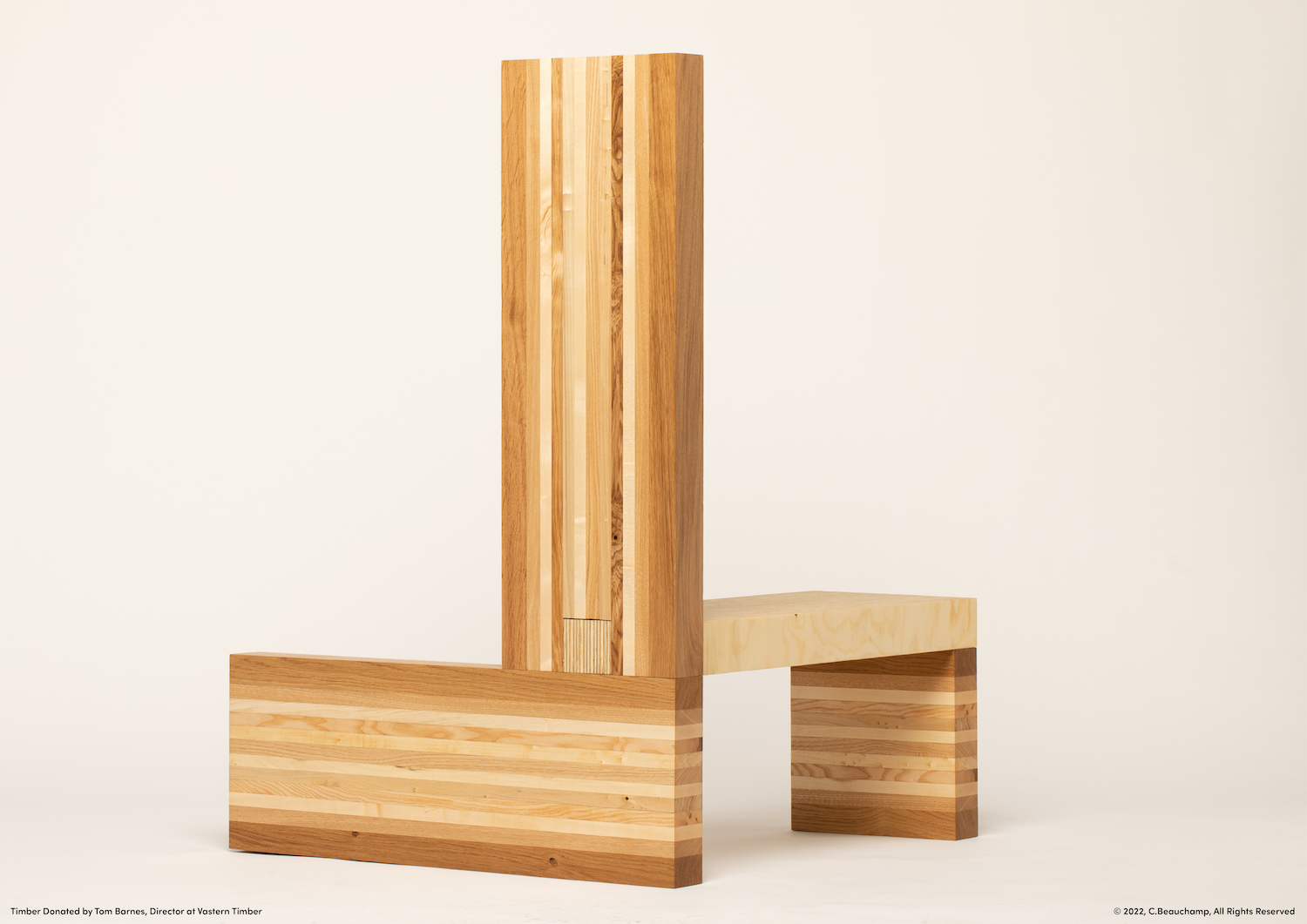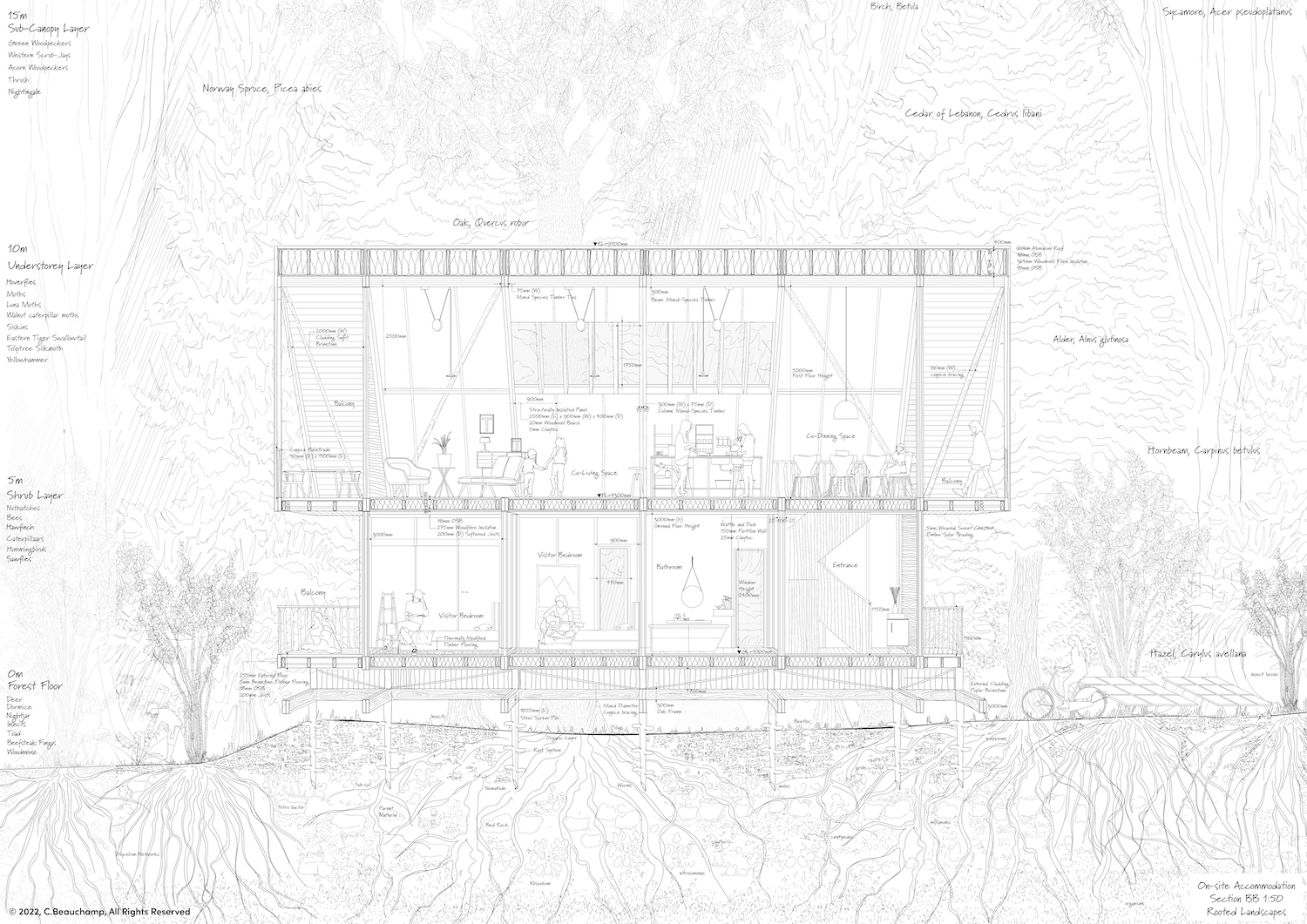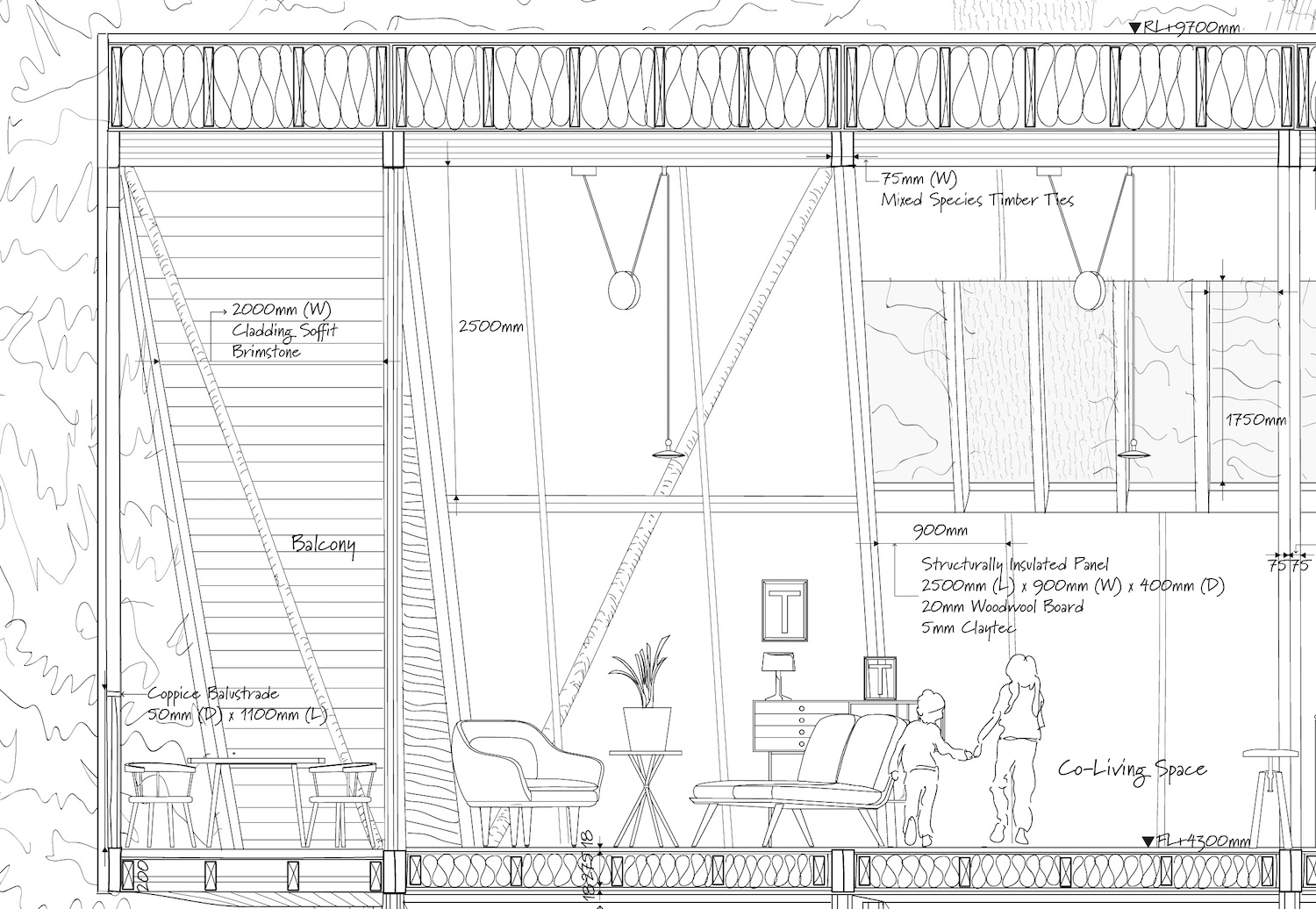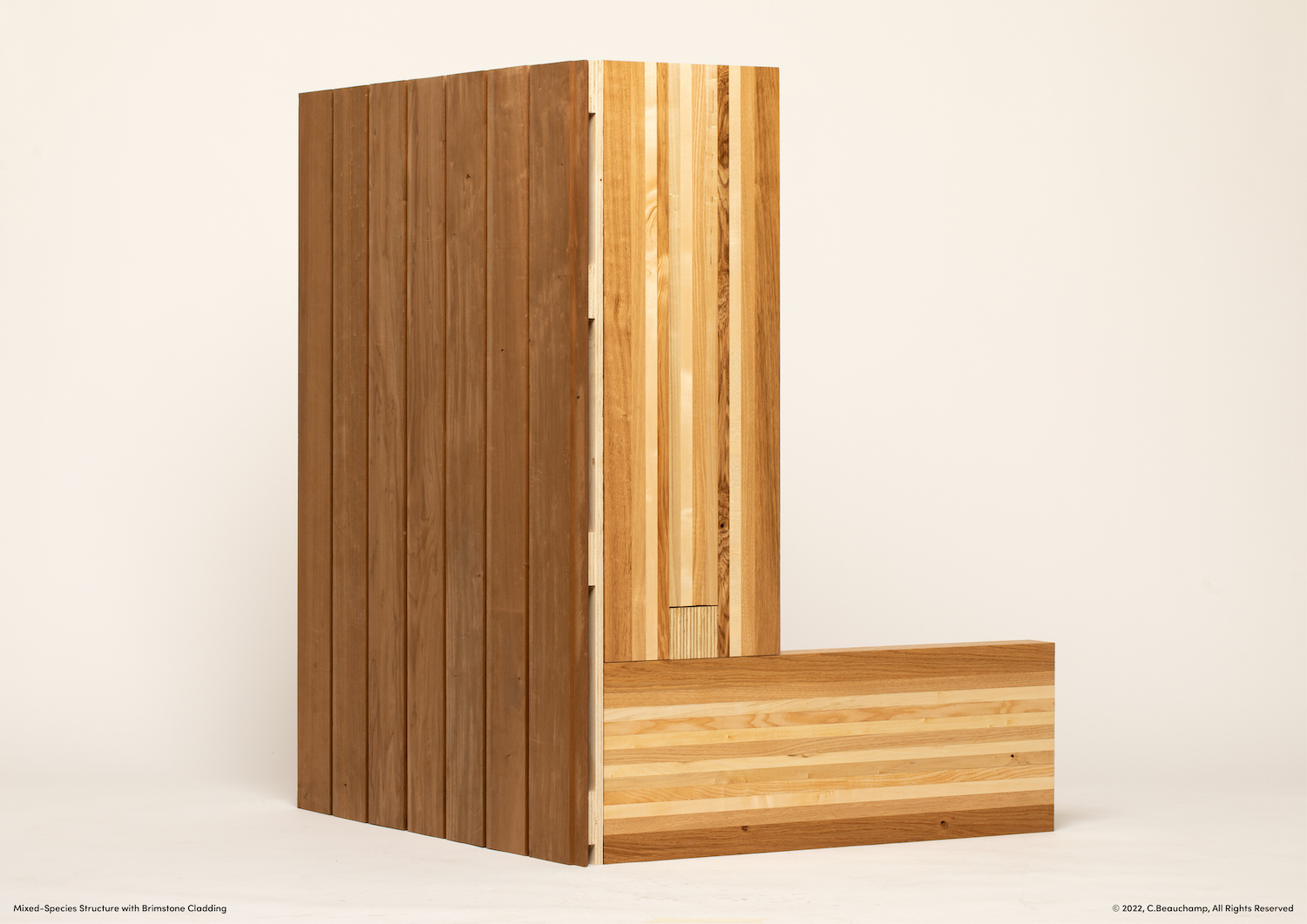August 11, 2022
Timber innovation: Rooted Landscapes investigates broadleaf glulam construction.
We were delighted to donate timber to Connie Beuchamp, a student who is completing her Masters in Architecture at the University of Arts London. Connie’s ‘Rooted Landscapes’ project explores topics that are very close to our own hearts. We asked her to tell us more about the project:
I am an architectural designer and material researcher specialising in timber innovation and construction. I’m completing my Masters in Architecture at Central Saint Martins, University of Arts London and collaborated with Vastern Timber during my major project, Rooted Landscapes.
Rooted Landscapes aims to bring new life to neglected woodlands and support the built environment’s bid to decarbonise. Aiming to balance extraction with regeneration, these alternative timber constructions use climate-resilient tree species, and could help develop and maintain circular economies within the forest.
I developed prototypes of glulam post and beam structures, created from laminations of varying broadleaf timbers.
What is the aim of this project?
Only 28% of all timber consumed in the UK was homegrown in 2020, making this country the world’s second-largest importer of wood.* The timber imported from various countries has a higher environmental risk, with a fifth of these countries relying on forestry management models that accept destructive land practices and, as a result, ecological degradation.*
My final-year project, Rooted Landscapes, proposes an alternative regenerative forestry model that transforms British woodlands into productive and economic landscapes whilst maintaining ecological well-being. This project aims to stimulate the development of a homegrown timber trade that supports the built environment’s bid to decarbonise and bring new life to our neglected woodlands.
How does this project help to secure a future for British timber?
Phase one of Rooted Landscapes is a research investigation into climate-resilient tree species to develop a regenerative forestry management prototype. The forestry model is designed for the afforestation and inhabitation of underused land or unproductive woodlands to the benefit of both timber production and woodland ecosystems.
Phase two of Rooted Landscapes focuses on the development of a series of alternative timber constructions that utilise the climate-resilient tree species and maintain circular economies within the forest. These economies aim to balance extraction with regeneration.
What were the key outcomes of the project?
The proposed regenerative forestry management plan is a tree planting and forest management strategy to grow varied, successful and climate and pest-resilient woodlands in the UK. The model is a series of interchangeable planting plans, creating a mosaic of forest plots that grow diverse timber species in a range of weather and soil conditions.
In the forestry management model, we have identified vital broadleaved trees critical to forestry ecosystems, such as sweet chestnut and poplar. Traditionally these trees have not been used in this country as structural timber; if not neglected altogether, the timber is often used as biomass.
Rooted Landscapes proposes alternative uses for these critical species by developing a mixed-species construction method (see image below). In collaboration with Jez Ralph from Evolving Forest / Timber Strategies, the design is a glulam post and beam structure created from laminations of varying broadleaf timbers. This modern form of timber frame consciously utilises low levels of high-quality timber, simultaneously increasing the use of these underused British species.
The mixed-species construction method could offer a substitute for buildings that require oak frames or mass timber, such as glulam and cross-laminated timber. My research has been discussed with timber engineers who predict the post and beam strategy could have a high structural performance. However, this critical work is yet to be structurally examined and will form part of the next research phase.
How was this idea developed, and what was the process?
Throughout the last 12 months of research, each interview and site visit led me to the next specialist, expanding my knowledge of forestry management, biodiversity and timber research. From an architectural perspective, Jez Ralph and I examined the existing limited precedents and distinguished the most suitable timbers we could use to make the mixed-species post and beam.
The kind donation of timber from Tom Barnes at Vastern Timber allowed me to test these theories in the workshops at the university. For four weeks, I experimented with different lamination thicknesses and the lamination order of each species, working towards a structurally viable technique and aesthetically beautiful product.
The most challenging aspect of the experimentation was creating a perfect glued lamination; without equal pressure and glue, the lamination would bow, and the timber would warp in one direction. After this experimental process, I was excited to finalise the first full-scale prototype beam and column.
Prototype: Mixed species structure with Brimstone cladding
What’s Next?
A number of questions remain to be answered, and I hope to address these in a further phase of research, if funding can be secured. In addition to testing the structural properties of the mixed-species construction, I am keen to understand more about its practical feasibility. How much timber is required to make this material on a moderate scale? Is it possible to make this material in a modern manufacturing setting? I also recognise that we need to find sites where experimentation with the forestry management model could be undertaken.
The insights that have been gained so far through this project give me reason to believe that this approach could be genuinely transformative. The potential is huge for developing the British timber industry, reducing timber imports from countries where environmental protection is weak, revitalising British woodlands, and protecting forestry ecosystems.
A special thanks to Tom Barnes at Vastern Timber for donating the high-quality British timber.
Written and Researched by Connie Beauchamp
Instagram: beauchamp_design
*Forestry Commission, Forestry Research Statistics 2021 (2021). Available online: [https://www.forestresearch.gov.uk/tools-and-resources/statistics/forestry-statistics/forestry-statistics-2021/9-international-forestry-2/]








